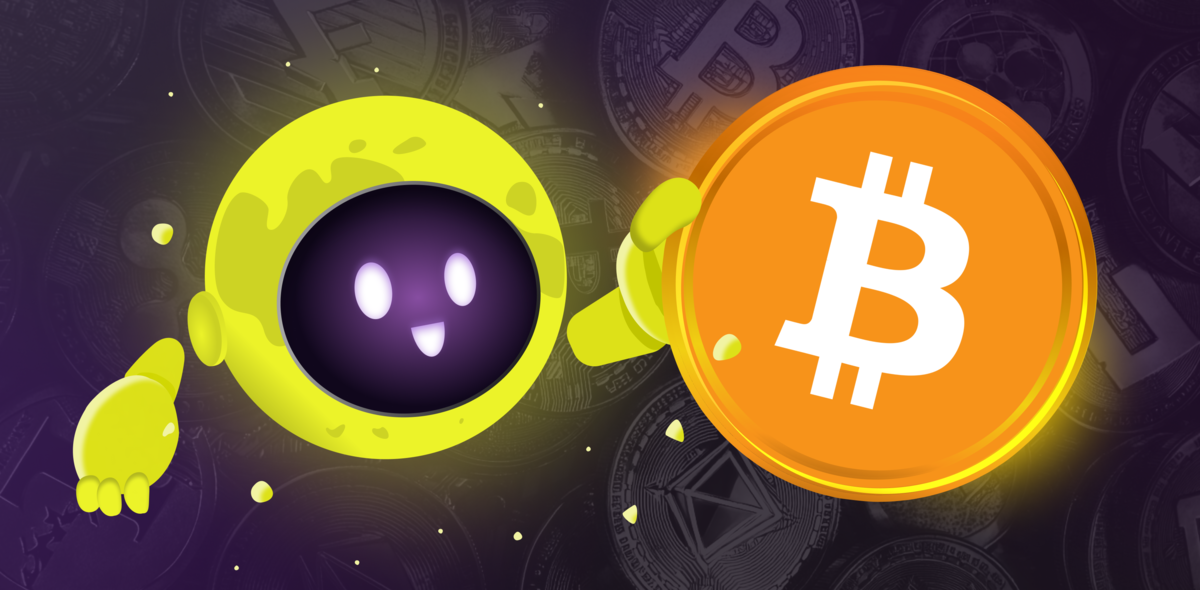
Satoshi Nakamoto is a pseudonym for the person or group of people who created Bitcoin, the first cryptocurrency, and introduced the concept of blockchain technology to the world. Despite being a well-known name in the cryptocurrency community, the true identity of Satoshi Nakamoto remains a mystery.
The persona appeared to be involved in the early days of Bitcoin, working on the first version of the software in 2007. Communication to and from Nakamoto was conducted via email, and the lack of personal and background details made it impossible to find out the actual identity behind the name. In recent years, there have been several claims of people being Satoshi Nakamoto, but none have been proven to be true.
We already talked about Satoshi's personality mystery, and in this article, we will explore the recent versions of Satoshi Nakamoto's personality and what we know about this mysterious figure for now.
Creating Bitcoin
The bitcoin.org domain was registered in the summer of 2008, and a few days later, a description of the Bitcoin cryptocurrency appeared on the site. At the time, there was little interest in digital assets, so the nine-page document was distributed among cryptocurrency enthusiasts through specialized forums.
The Bitcoin whitepaper was published in October of 2008 by an individual or group under the name of Satoshi Nakamoto. It's titled "Bitcoin: A Peer-to-Peer Electronic Cash System" and is only nine pages long. The paper set the foundation for a significant transformation in how global payments are carried out and how entire industries approach data management. The paper suggested an electronic transaction system that doesn't need an intermediary to make payments. In essence, Bitcoin relies on cryptography, the study of safe communication technologies.
The white paper explains how to solve the double-spending problem by using a distributed timestamp server to prove transaction order. This proof is generated through peer-to-peer computation. The Bitcoin white paper is seen as a technical constitution and governing document for a new kind of money that has no state and is completely decentralized.
In 2010, Nakamoto transferred the source code to Gavin Andresen and then reassigned the domains to several cryptocurrency holders, withdrawing from active participation in the project.
From the beginning, Satoshi placed a high value on anonymity. He always used the secure Tor browser to access the Bitcoin network and carefully concealed his identity. While others wondered if Satoshi was crazy, considering his lifestyle, and even suspected him of having ties to the yakuza, he continued to work on the currency's source code with other cryptocurrency enthusiasts.
Satoshi remained an authority to all for a long time, discussing current Bitcoin problems and possible solutions in online chats. The bugs and flaws in the Bitcoin network were always resolved with his involvement. Over time, however, Satoshi's Bitcoin policies and actions were increasingly criticized. As a result, he decided to remove his name from the copyright statement, update the Bitcoin.org website, and add contact information for other active developers.
Retirement
In the last email sent on behalf of Satoshi to the Bitcoin team, dated April 26, 2011, he wrote: "I am currently busy with other projects. Bitcoin is in good hands thanks to Gavin and everyone else". After that, he stopped appearing online (under Satoshi’s name, at least), which further fueled interest in his identity. Many researchers have attempted to unravel the enigma surrounding this programmer, only to discover that uncovering the true identity of Satoshi Nakamoto is no simple task.
What Satoshi Nakamoto Has Said About Himself
The information Satoshi Nakamoto provided about himself leaves many questions unanswered. He stated that he was born on April 5, 1975, and he is Japanese. However, the cryptocurrency community believes that Satoshi Nakamoto is a pseudonym. Interestingly, in Japan, it is common to write the surname before the first name. However, this man always used the reverse order when communicating online. In addition, he never used Japanese words but always wrote in perfect English. Also noteworthy is the timing of Satoshi Nakamoto's online activity, which occurred during the night in the Japanese time zone. If he were working from that country, it would imply that he slept during the day for several years, which appears improbable.
Versions, Speculations, and Conspiracies
Satoshi's date of birth, April 5, 1975, may contain a hidden message. Considering his desire to expose the imperfections of the modern financial system, which was based on the gold standard and abolished by the world's elites in 1971, this date becomes interesting. It was on April 5, 1933, that U.S. President Franklin Roosevelt signed an executive order prohibiting Americans from accumulating and storing gold. This right was only returned to Americans in 1975. Perhaps Satoshi also wanted to show the role he envisioned for Bitcoin. This message is prophetic - today, many people refer to Bitcoin as the "new gold."
Satoshi Nakamoto's name is also questionable and may have a hidden meaning. In Japanese, "satoshi" means "wise" or "clear-thinking". The word "naka" translates to "inside" and "moto" translates to "base" or "foundation". One can also explore the hieroglyphic interpretation of the name, which can be translated as "in the book".
Who Is Gavin Anderson?
In 2010, Gavin Anderson joined the cryptopunk community and was one of the last to join the team working on Bitcoin. His active involvement in the project led Satoshi Nakamoto to appoint him as the lead developer of the reference implementation of the Bitcoin network's client software on the day he disappeared. Nakamoto also entrusted Anderson with the blockchain's network alert key and granted him access to the code repository.
Andersen founded the Bitcoin Foundation in 2012 to support and develop the first cryptocurrency. In 2014, he made the decision to leave his position as a software developer in order to fully dedicate himself to running the foundation. Colleagues said the man was completely dedicated and obsessed with cryptocurrency. They mentioned that he believed Bitcoin was created to establish a decentralized people's currency, which he considered to be more valuable than gold.
After the disappearance of Satoshi Nakamoto, Andersen began criticizing Bitcoin developers for their unwillingness to increase network bandwidth, and co-initiated the first BTC fork, Bitcoin XT. In May 2016, his commit access to Bitcoin Core on GitHub was revoked after he claimed that Craig Wright was Satoshi Nakamoto. In November 2017, Andersen endorsed the Bitcoin hardfork, Bitcoin Cash (BCH).
Despite Andersen's significant involvement in the project, the community considers it unlikely that he was hiding behind the pseudonym Satoshi Nakamoto.
Journalists Investigate the Identity of Satoshi Nakamoto
In 2014, Newsweek published its investigation presenting one version of Satoshi Nakamoto's identity. It revealed that there was a man of Japanese descent named Dorian Satoshi Nakamoto living in the United States, whom the journalists believed to be the same Satoshi. They presented some "evidence" to support this version:
Dorian Satoshi Nakamoto lived and worked in California, near the headquarters of the Gilmore Group, where members of the cryptopunk community met. He was also only a few blocks away from Hal Finney, a well-known crypto-punk and one of the developers of bitcoin.
Dorian Nakamoto has a degree in physics and worked as a systems engineer for classified defense projects and as a computer engineer for technology and financial information services companies, including Citibank. In other words, he has knowledge and experience in IT.
In an interview with Newsweek, he stated that he was "no longer involved in the project" and that "his work is now being done by other people." Journalists interpreted this as a reference to the Bitcoin creation project.
Dorian then repeatedly and publicly denied any connection to bitcoin. He claimed that the Newsweek journalists deliberately twisted his words in the interview to create a sensation, when in fact he was referring to his past experience in the banking industry.
After a while, the public lost interest in this version of the Bitcoin creator's identity, especially after Satoshi Nakamoto's real P2P Foundation account came to life after five years of silence, posting "I am not Dorian Nakamoto". That account and Satoshi Nakamoto's email were later hacked. However, no expert doubts that the message was posted by the real Satoshi.
"Faketoshi" and Other Nakamotos
The most prominent candidate for the role of Satoshi Nakamoto is Craig Wright, an Australian entrepreneur, programmer, and scientist. He suddenly appeared on the scene in 2015, claiming that Satoshi is actually two people: Wright himself and his colleague Dave Kleiman, who died in 2013 and can neither confirm nor deny this information.
It was later revealed by WikiLeaks that Craig was not who he claimed to be. Wright tried to use his old record as proof of his connection to the creation of cryptocurrency. The irony, however, is that the word "cryptocurrency" was added to this text much later. The community found ample (alleged) evidence that Craig could be lying, and some in the community have taken to calling him by the nickname "Faketoshi" (actually, this nickname, surfacing in the crypto world from time to time, has been given to quite a few people).
Hal Finney, a libertarian and member of the cypherpunk community, was the recipient of the first Bitcoin transaction in January 2009. He seemed like the perfect candidate to be the creator of the cryptocurrency. However, when Dorian Nakamoto, Finney's neighbor and compatriot, came along, it sparked more speculation. In May 2020, two pieces of news emerged that refuted the programmer's connection to the creation of the first cryptocurrency. First, Finney worked on the Windows operating system. Second, he created a Bitcoin client for Mac OS on behalf of Satoshi Nakamoto.
Nick Szabo, an American scientist and cryptographer, is considered by some people to be the author of virtual money. Nick developed the concept of digital currency for the digital age by creating "Bit Gold", the predecessor to Bitcoin (but due to technical limitations, it did not become popular with the masses). One blogger, after analyzing Satoshi's white paper, concluded that Nick Sabo could be Satoshi Nakamoto. However, Nick himself has never confirmed this hypothesis.
There is also an amusing speculation that Satoshi's nickname was chosen by a group of researchers from a consortium of four companies: Samsung, Toshiba, Nakamichi, and Motorola. However, so far no one has been able to confirm or deny this theory.
Conclusion
Throughout the history of Bitcoin, there have been no less than nine candidates for Satoshi Nakamoto, but so far no one knows the exact answer to the question of who he really was: a man, a woman, or a group of people. And maybe, in the end, it doesn't really matter. After all, if his identity is revealed, the foundations of Bitcoin's complete decentralization could be weakened.




